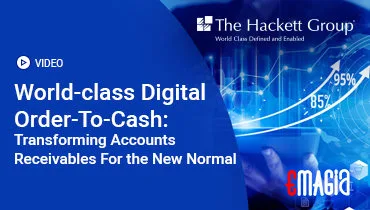Introduction: The Evolving Role of Treasury Management
In today’s fast-paced global economy, effective financial management is paramount for any organization. Companies face increasing complexity in managing cash, liquidity, investments, and financial risks across multiple entities and geographies. This is where treasury management software steps in as a game-changer. Far beyond simple accounting tools, modern treasury management systems provide a centralized, automated platform to optimize financial operations. This article will explore the critical importance of a robust treasury system, its key features, the profound benefits it offers, and how it is revolutionizing the way businesses approach financial control. Understanding “what is a treasury management system” is key to unlocking financial agility and strategic decision-making.
What is a Treasury Management System (TMS)? Defining the Core Treasury System
At its heart, a treasury management system (TMS) is a specialized software application designed to automate and streamline a company’s financial operations. It acts as a central hub, consolidating all data and processes related to cash management, liquidity, investments, debt, and financial risk. A core treasury system provides real-time visibility into an organization’s cash position across all bank accounts and entities, regardless of currency or location. This comprehensive oversight is crucial for making informed financial decisions. Essentially, a TMS is an integrated treasury platform that empowers finance professionals to manage financial resources with precision and efficiency.
The Imperative of Treasury Management Solutions in Modern Finance
The complexity of modern financial landscapes, characterized by fluctuating exchange rates, interest rate volatility, and globalized operations, makes robust treasury management solutions indispensable. Without a dedicated treasury system, businesses often rely on manual processes and spreadsheets, which are prone to errors, offer limited visibility, and consume significant time. A well-implemented TMS addresses these challenges head-on, ensuring efficient treasury management. It allows organizations to optimize cash utilization, mitigate financial risks, ensure regulatory compliance, and ultimately contribute significantly to overall profitability. Effective treasury solutions are no longer a luxury but a strategic necessity.
Key Features of Best-in-Class Treasury Management Software Systems
To truly revolutionize financial operations, the best treasury management software systems offer a comprehensive suite of features. These functionalities span critical areas of treasury, providing tools for efficient cash flow, risk mitigation, and strategic financial planning. Understanding these treasury management solutions key features is vital when evaluating potential providers.
Centralized Cash Management and Real-time Visibility in Your Treasury System
A fundamental feature of any leading treasury system is its ability to centralize cash management. This involves aggregating bank balances and transaction data from all bank accounts, across multiple entities and currencies, into a single, real-time view. Enhanced cash visibility provided by the treasury management solution allows treasurers to know their precise liquidity position at any given moment. This immediate insight is crucial for optimizing cash utilization, identifying idle cash, and preventing overdrafts, ensuring efficient treasury management across the board.
Automated Payments and Treasury’s Payment Systems Streamlining
Modern treasury management software automates and streamlines payment processing. This includes initiating payments, managing approvals, and integrating with treasury’s payment systems and various banking protocols (like SWIFT, EBICS). Automation reduces manual errors, accelerates payment cycles, and enhances security by implementing robust approval workflows. This feature transforms routine payment tasks into an efficient, compliant, and fraud-resistant process, which is a key benefit of advanced treasury management systems.
Cash Forecasting and Liquidity Management for Treasury Management Software
Sophisticated treasury management software offers powerful cash forecasting capabilities. By analyzing historical data, current transactions, and projected inflows and outflows, the system can provide accurate short-term and long-term cash flow forecasts. This intelligence is critical for effective liquidity management, allowing companies to anticipate funding needs or surplus cash positions. It empowers treasurers to make informed decisions regarding investments, debt repayment, and working capital optimization, directly impacting the benefits of a treasury management system.
Financial Risk Management: FX, Interest Rate, and Counterparty Risk with TMS Finance
Managing financial risk is a core responsibility of treasury. A robust treasury management system provides tools for identifying, measuring, and mitigating various financial risks, including foreign exchange (FX) risk, interest rate risk, and counterparty risk. It can monitor exposures, value hedging instruments, and simulate scenarios to assess potential impacts. This comprehensive approach to risk management helps safeguard a company’s financial health, making TMS finance an indispensable tool for financial stability.
Debt and Investment Management in Your Corporate Treasury Software
Leading corporate treasury software solutions include modules for managing debt and investment portfolios. For debt, this means tracking all borrowings, managing maturities, calculating interest payments, and optimizing debt structures. For investments, the software assists in managing various instruments, tracking performance, and ensuring compliance with investment policies. This integrated approach provides a holistic view of a company’s financial assets and liabilities, vital for comprehensive treasury management.
Bank Account Management and Connectivity via Treasury Gateway
A TMS provides centralized control over all bank accounts, including managing signatories, reporting requirements (like FBAR), and ensuring accurate bank reconciliation. Seamless bank connectivity through a treasury gateway is crucial, allowing for automated data exchange with multiple financial institutions. This eliminates manual data entry, reduces reconciliation time, and enhances the security and control over banking relationships within the overall treasury management system.
Compliance and Reporting Capabilities of Treasury Management Systems Software
Ensuring regulatory compliance (e.g., IFRS, GAAP, SOX) is a significant burden for treasury departments. Treasury management systems software automates much of the compliance process by providing comprehensive audit trails, standardized reporting, and configurable workflows that enforce internal controls. This not only reduces the risk of non-compliance but also simplifies the reporting process for internal and external stakeholders, giving true visibility into treasury doge government payments reporting changes and other critical regulatory shifts.
Benefits of a Treasury Management System: Unlocking Financial Efficiency
Implementing a treasury management system delivers a multitude of tangible benefits that directly impact a company’s bottom line and strategic capabilities. These advantages highlight why more and more organizations are investing in treasury management products.
Enhanced Cash Visibility and Optimized Liquidity with Treasury Management Solutions
One of the foremost benefits of a treasury management system is the unparalleled real-time visibility into global cash positions. This enables treasurers to optimize liquidity by effectively deploying excess cash, minimizing borrowing costs, and ensuring sufficient funds are available for operations. Enhanced visibility allows for proactive decision-making, transforming reactive cash management into strategic liquidity optimization with robust treasury management solutions.
Reduced Financial Risk and Improved Compliance through a Treasury System
A sophisticated treasury system plays a critical role in mitigating financial risks. By providing comprehensive tools for FX, interest rate, and counterparty risk management, it helps protect against market volatility and potential losses. Furthermore, automated compliance features and detailed audit trails significantly reduce the risk of fraud and ensure adherence to evolving regulatory requirements, contributing to stronger corporate governance and sound treasury management.
Increased Operational Efficiency and Cost Savings from Treasury Management Software
Automating manual treasury processes – from cash positioning and bank reconciliation to payment initiation and reporting – dramatically increases operational efficiency. This leads to significant cost savings by reducing labor, eliminating errors, and optimizing banking fees. Staff can shift from tedious data entry to more strategic, value-added activities, making treasury management software a powerful tool for productivity.
Better Decision-Making and Strategic Planning with Treasury Management
With real-time data, accurate forecasts, and robust analytical tools provided by a TMS, treasury professionals gain the insights needed for superior decision-making. This includes optimizing investment strategies, structuring debt more effectively, and making informed hedging decisions. A treasury platform transforms the treasury function from a transactional department into a strategic partner that supports the overall business objectives through proactive treasury management.
Navigating the Market: Choosing the Right Treasury Management System Providers
The market for treasury management systems is robust, with various treasury management system providers offering diverse solutions. Selecting the right one requires careful consideration of your organization’s specific needs, size, and complexity.
The Future of Treasury Management: AI, APIs, and Cloud Treasury Solutions
The landscape of treasury management is continually evolving, driven by technological advancements. Emerging trends are reshaping how organizations manage their finances, moving towards even greater automation, intelligence, and connectivity. The future of the core treasury system lies in embracing these innovations.
Artificial Intelligence and Machine Learning in Treasury Management Systems
AI and machine learning are rapidly transforming treasury management systems. AI algorithms enhance cash forecasting accuracy, identify anomalies for fraud detection, and automate complex reconciliation tasks. Predictive analytics powered by AI allows treasurers to anticipate financial trends with greater precision, optimizing liquidity and hedging strategies. This makes AI an indispensable component for next-generation treasury management system software.
API Connectivity and Real-time Treasury Platform Integration
APIs (Application Programming Interfaces) are pivotal for the future of treasury management. They enable seamless, real-time connectivity between the TMS, banks, ERP systems, trading platforms, and other financial applications. This robust integration facilitates instant data exchange, automates workflows, and provides a truly unified treasury platform, ensuring that information flows freely and accurately across the financial ecosystem. This direct bank connectivity streamlines treasury’s payment systems and reporting.
Cloud-Based Treasury Management Solutions and Scalability
The shift to cloud-based treasury management solutions offers unparalleled scalability, flexibility, and accessibility. Cloud TMS solutions reduce IT overhead, allow for rapid deployment, and enable remote access, which is crucial for global operations. This model provides the agility needed to adapt to changing business requirements and market conditions, making cloud the preferred deployment for most modern treasury solutions.
How Emagia Elevates Treasury Management to a Strategic Advantage
Emagia understands the intricate challenges of modern financial operations and offers cutting-edge solutions that extend beyond traditional treasury management. While primarily recognized for our prowess in intelligent order-to-cash automation, Emagia’s AI-powered platform provides foundational capabilities that seamlessly integrate with and significantly enhance a company’s overall financial health, including key aspects relevant to treasury. Our solutions provide unparalleled data visibility, predictive insights, and automation that can directly improve liquidity forecasting, accelerate cash flow, and fortify financial controls – all critical components of effective treasury management.
By leveraging AI and advanced analytics, Emagia’s platform transforms raw financial data into actionable intelligence. This enables more precise cash forecasting, automates reconciliation processes that feed directly into liquidity positions, and enhances the overall accuracy of financial reporting. For organizations seeking to optimize their working capital and gain a holistic view of their financial ecosystem, Emagia acts as a powerful complement, empowering treasury teams with the data integrity and real-time insights necessary for truly strategic treasury management decisions.
Frequently Asked Questions about Treasury Management Software
What is treasury management at a bank, and how does it relate to corporate TMS?
At a bank, treasury management refers to the services they offer to corporate clients for managing their cash, liquidity, and financial risks, such as cash pooling, payment processing, and investment vehicles. Corporate TMS, on the other hand, is the software used by the corporation itself to manage its internal treasury functions, often integrating with the bank’s services via a treasury gateway.
What are the primary benefits of implementing a treasury management system?
The primary benefits of a treasury management system include enhanced cash visibility, optimized liquidity management, reduced financial risk (FX, interest rate), improved operational efficiency through automation, significant cost savings, and better strategic decision-making based on real-time data and predictive analytics. It transforms reactive financial operations into proactive treasury management solutions.
How does a treasury management system differ from an ERP system?
While an ERP (Enterprise Resource Planning) system is broad, managing various business functions like HR, supply chain, and accounting, a treasury management system (TMS) is specialized. A TMS focuses specifically on financial operations like cash, liquidity, debt, investments, and risk management. While they often integrate, a TMS provides deeper, more granular financial control and automation than an ERP’s general finance modules.
Is treasury management software suitable for small businesses?
Yes, while traditionally used by large corporations, many treasury management system providers now offer scalable and cost-effective treasury management software for small business needs. These solutions help smaller entities achieve improved cash flow forecasting, better liquidity management, and enhanced financial control, which are crucial for growth and stability. Even a basic treasury solution can offer significant value.
What kind of financial instruments can a corporate treasury software manage?
Corporate treasury software can manage a wide range of financial instruments including bank accounts, short-term and long-term debt (loans, bonds), various investment instruments (money market funds, commercial papers), and hedging instruments (FX forwards, options, interest rate swaps). This comprehensive management is a key strength of a robust treasury platform.
How do treasury management systems ensure regulatory compliance?
Treasury management systems ensure regulatory compliance by providing automated audit trails for all transactions, enforcing internal controls, generating standardized reports for regulatory bodies, and sometimes offering built-in modules for specific compliance requirements (e.g., IFRS, Dodd-Frank). This helps organizations stay compliant with evolving financial regulations and understand changes like those in treasury doge government payments reporting changes.
Conclusion: The Future of Treasury Management is Automated and Intelligent
The landscape of treasury management is undeniably shifting towards automation and intelligence. Treasury management software is no longer just a tool for tracking cash; it’s a strategic asset that drives financial performance, ensures compliance, and fosters better relationships with banking partners. By embracing the power of sophisticated treasury management systems, businesses can navigate the complexities of financial markets with greater agility, efficiency, and profitability. The future of treasury is here, and it’s powered by smart, integrated, and comprehensive treasury solutions that redefine what “what is treasury management at a bank” truly means for corporate finance.



